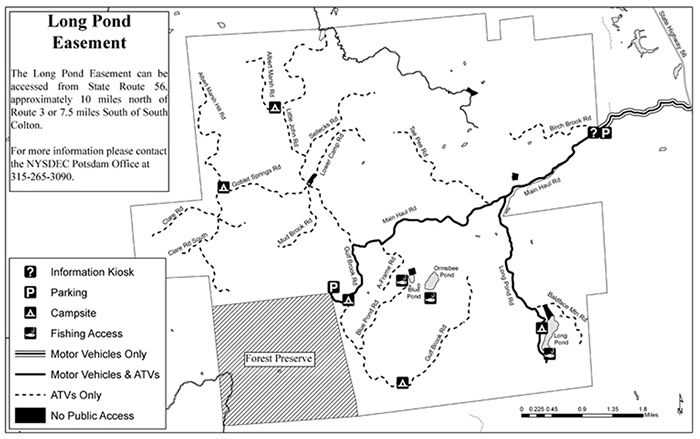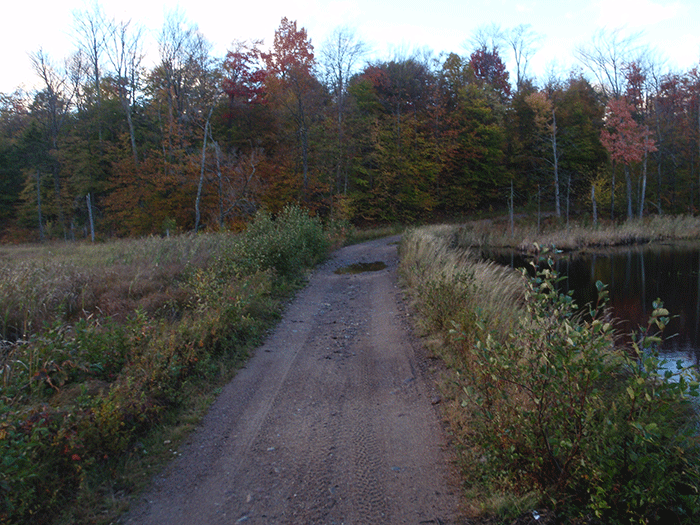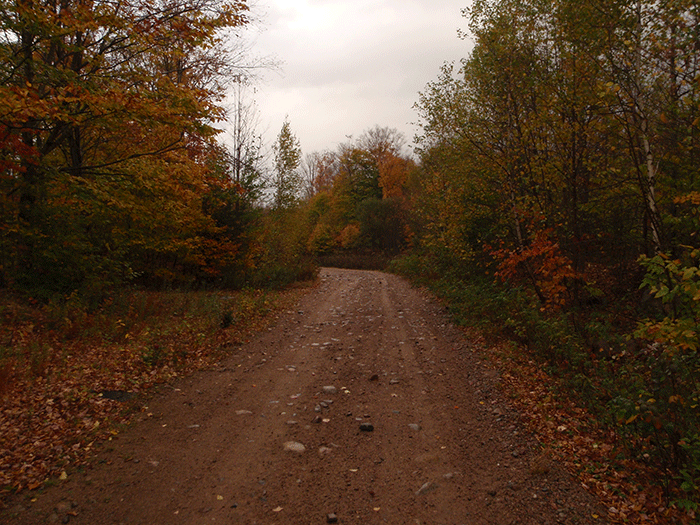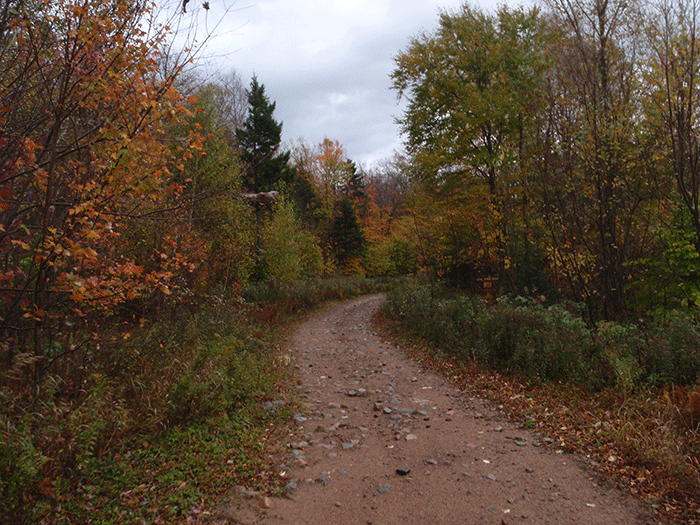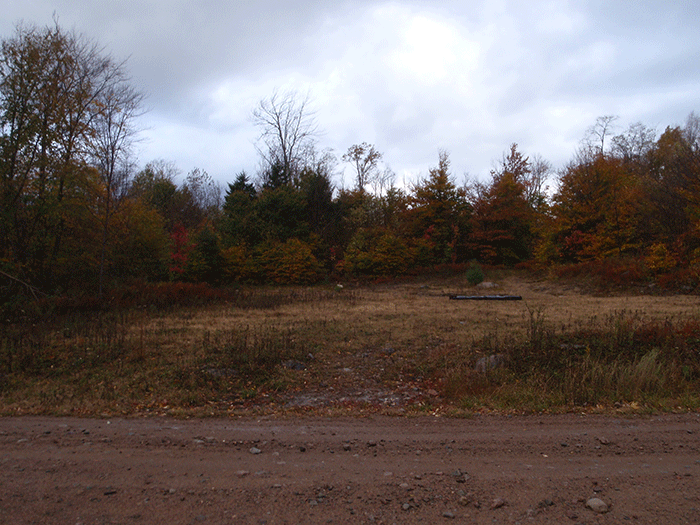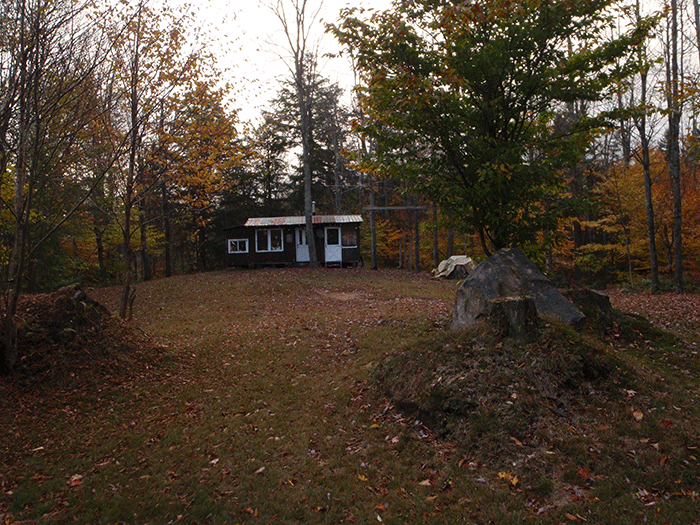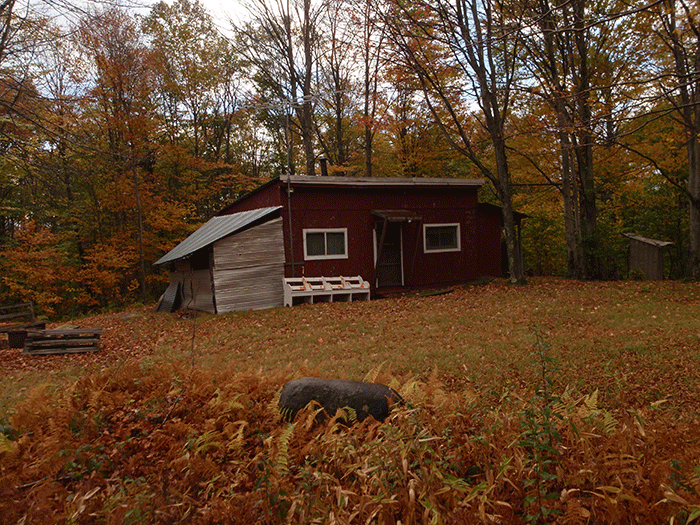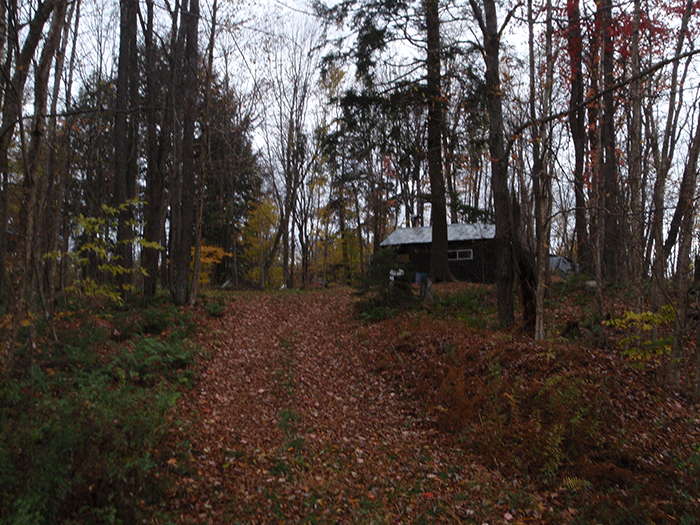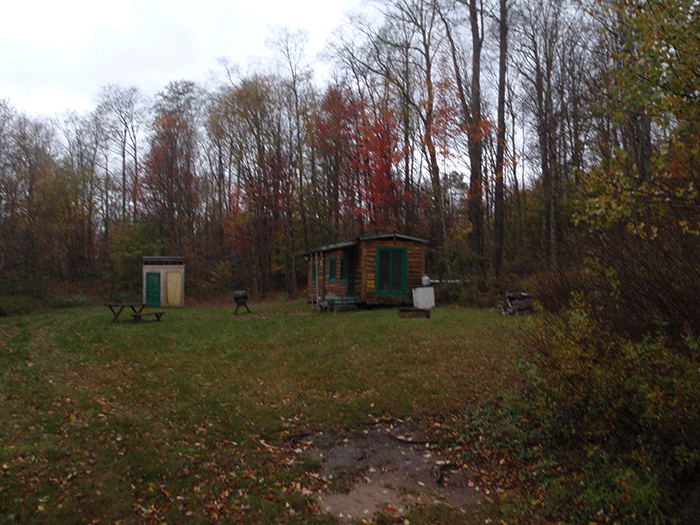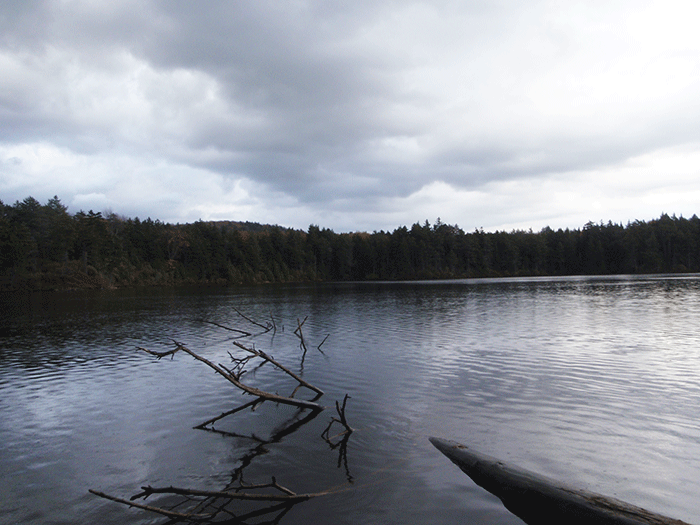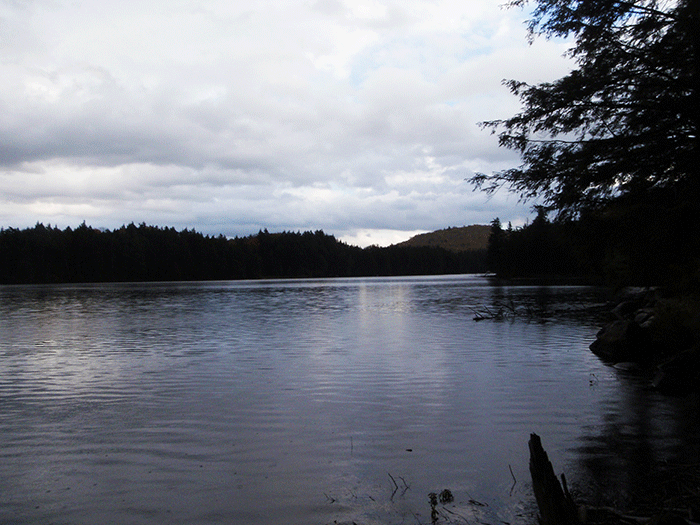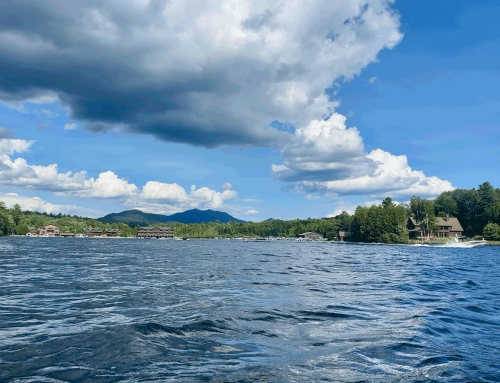Public Recreational Rights on the Long Pond Conservation Easement should Remain Full and Complete, Grandfathered Leased Hunting Camps should be Removed
In January 1999, the State of New York purchased the 18,950-acre Long Pond Conservation Easement in St. Lawrence County that included broad public recreation rights. Under the terms of the easement, six buildings were designated and allowed to remain in perpetuity on the tract. In addition to these six building there were around three dozen other primitive hunting and fishing camps spread across the property. Some of these camps were grandfathered for a period of 15 years with exclusive hunting rights and were supposed to be removed in 2014. At that time, full public recreation rights were to be realized as all structures were to be removed with only the six designated private buildings remaining.
The Department of Environmental Conservation (DEC) is now seeking to change the Long Pond Conservation Easement to allow 15 hunting and fishing residential structures to remain on the property in perpetuity. These 15 structures would be in addition to the six permanent buildings to bring the total number of residential buildings to 21.
Protect the Adirondacks opposes this change to the Long Pond Conservation Easement. We believe that the proposed change will degrade the environmental resources and public recreational rights to the tract. Environmental protection and public recreation were key public benefits in this conservation easement.
Help us stop this plan to weaken environmental protections and public recreational access on 18,950 acres of public lands by submitting an automatic public comment below.
What is a Conservation Easement?
The primary function of a conservation easement is to limit or eliminate future development and undesirable land uses on a property, while allowing for continued private ownership and traditional management, such as forestry or agriculture. A conservation easement is a binding legal agreement that permanently protects a parcel of land. Generally, Adirondack lands include three rights — forestry/mining, recreation, development. The general practice in the Adirondacks is that when the State of New York purchases a conservation easement it acquires the development and recreation rights while the private landowner retains the forest management rights. In this way, state purchase of a conservation easement is an investment in the economy and environment of an area. After an easement is purchased, it is recorded with the deed and is binding on future landowners. A conservation easement keeps land in open space and forestry for the long-term, ensures that the property will not be developed, and expands public recreational opportunities.
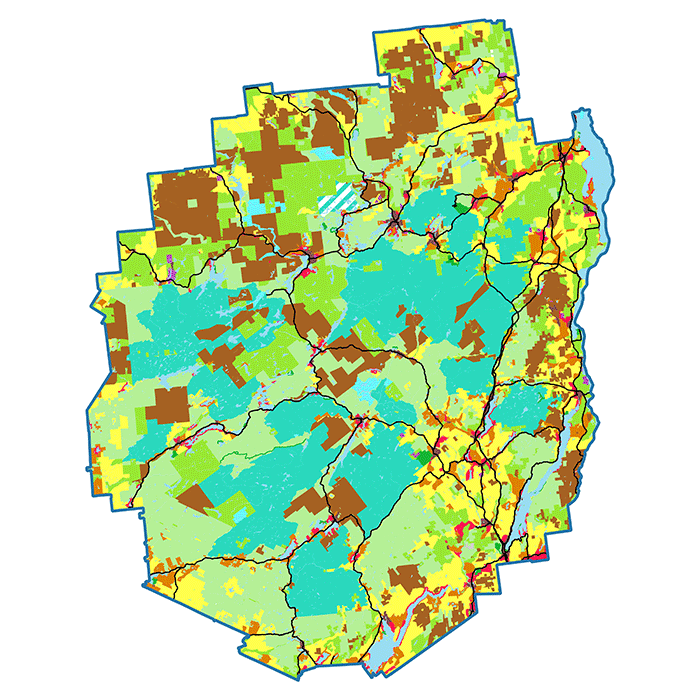
This map shows lands in brown where the State of New York owns a conservation easement. These lands are tightly regulated with limited development and provide public recreational opportunities.
Environmental Protection and Public Recreational Rights Should be at the Heart of Every Conservation Easement
Each conservation easement is different based on the terms negotiated by the original seller of the easement and conditions of the land. In 1998, the State of New York purchased full public recreational rights to the Long Pond property. Under the terms of the conservation easement six permanent recreational camp compounds were authorized and approved as part of a subdivision permit from the Adirondack Park Agency (APA). In the past 20 years, the State of New York has purchased conservation easements on over 780,000 acres in the Adirondack Park. This is an important group of lands in the Adirondacks where environmental protections and pubic recreational rights should be protected and not given away.
The basic purposes of the Long Pond Conservation Easement were clearly stated. The original easement states that it was purchased by the State of New York “to provide for and encourage the limitation and restriction of development” and for “the right of public access to the protected property for recreational purposes.” These two fundamental rights will be turned upside down with the proposed modifications to allow 15 camps to remain in perpetuity.
Changes Will Degrade the Long Pond Conservation Easement through Loss of Public Recreation: The 15 leased camps have scores of total members who will maintain these leased camps as de facto private residential inholdings. These buildings are used year-round and will only serve to alienate the public from these lands as they will create a 2-tiered system of people with exclusive private recreational rights on public lands and those in the general public with limited actual recreational rights. This is contrary to the purposes of the Long Pond Conservation Easement, which was purchased to protect the environment and expand public recreation opportunities.
If the DEC is successful in their efforts to change the Long Pond Conservation Easement, this will allow 15 residential structures throughout the property in perpetuity. Today, the public has recreational access to the Long Pond tract but it is limited as it’s a shared experience with dozens of hunting camps. On the Long Pond tract, there are parking areas, informational kiosks with maps, and signs that are welcoming and informative (see pictures below).
The members of the hunting camps utilize a range of motor vehicles, which alienates other forms of recreation, such as hiking, biking, or primitive camping. The recreational impact from the motor vehicle use of club members is much more intensive and has greater environmental impacts than non-motorized public uses.
Changes Will Degrade the Long Pond Conservation Easement through Development and Sprawl: There is a great deal of information used in planning and zoning today about how residential structures in forest settings change the forest composition, wildlife patterns and species, bird nesting locations, and associated nearby plants and shrub communities. One residential structure can impact the ecological integrity of the greater forest area up to one-third of a mile or more. The Long Pond Conservation easement was purchased for environmental protection purposes, but the decision to change the terms of the easement to allow 15 additional buildings in perpetuity undermines the goals of environmental protection.
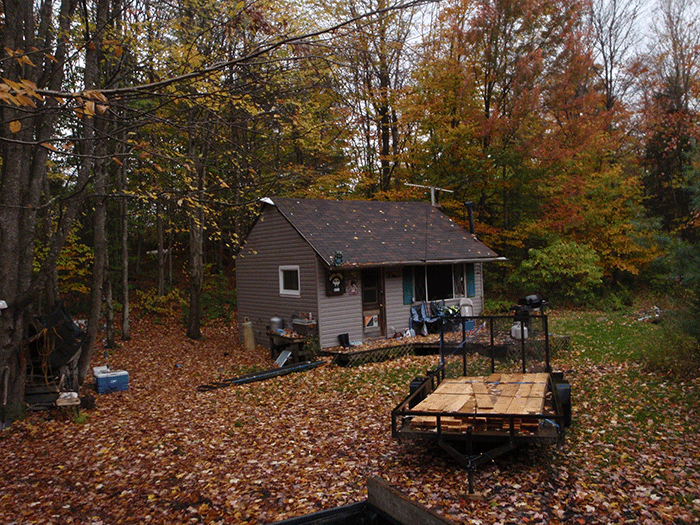
An example of a camp that the DEC is seeking to allow to stay in perpetuity. The impacts of these camps spill over into the surrounding forests and change wildlife and forest composition and patterns. These camps will be widely distributed throughout the 19,850 acres and cause widespread negative environmental impacts due to sprawl.
These camps are not clustered, but will be far flung throughout the total 19,850 acres. In this way their impacts will be even greater and far more damaging to the environmental health of the Long Pond tract. Development on conservation easement lands should be minimized. The proposed change to allow 15 camps to remain permanently on these lands poses a long-term threat to the environmental health and ecological integrity of these forest lands.
Proposed Net Conservation Benefit is Inadequate: Under state regulations discussed above any change to a conservation easement must include a “net conservation benefit” created by the state and underlying private fee landowner. Under the DEC proposal to modify the Long Pond Conservation easement, 300 acres of land will be added to the Whiskey Flats State Forest as a “net conservation benefit.” Click here to see a map of the Whiskey Flats area. This is supposed to offset the loss of public recreational use and enjoyment of the property and the long-term environmental degradation from the 15 buildings remaining in perpetuity. The relevant part of the state regulations for the revisions to a conservation easement states:
4. The proposed modification of a DEC conservation easement shall result in a net conservation benefit to the state, which must be calculated and considered within the spatial confines of the conservation easement in question or in the surrounding contiguous and adjoining lands, as determined by the department, after public comment, including consideration of any change in the level of public recreational opportunities or any change to the limitations or restrictions on the development, management or use of the property, or any other real property owned by or under the control of the grantor, for the purpose of preserving or maintaining the scenic, open, historic, archaeological, architectural, or natural condition, character, significance or amenities of the area where the property is located in a manner consistent with the public policy and purpose set forth in ECL section 49-0301.
As shown above the “net conservation benefit” lands are supposed to be “in the surrounding contiguous and adjoining lands” of the conservation easement. The proposed benefit lands near the Whiskey Flats State Forest are more than ten miles away and outside the boundary of the Adirondack Park. The propose net conservation benefit is inadequate and fails to comply with state rules for changing a conservation easement.
Proposed Changes to Long Pond Conservation Easement Violate Official State Procedures for Modifying an Easement: The proposed changes widely violate DEC’s own rules for making changes to easements. The proposed changes to the Long Pond Conservation Easement fail to comply with current state regulations.
The DEC recently created formal rules for how it goes about making changes to conservation easement lands. The new “Procedure for the modification or extinguishment of a conservation easement held by the New York State Department of Environmental Conservation” (6 NYCRR Part 592) outlines a number of criteria and standards that must be met. The proposed changes to the Long Pond Conservation Easement fail to pass muster on a number of counts.
Section 592.3 Standards states: “1. A modification of a DEC conservation easement, other than a modification to the stated purpose(s) as set forth in a DEC conservation easement, must not alter, and must be consistent with, the stated purpose(s) of the DEC conservation easement; and 2. A modification of a DEC conservation easement must not affect the perpetual nature of the DEC conservation easement.” The proposed changes to the Long Pond Conservation Easement undermine these two standards. They degrade the environment on these lands and curtail public recreational rights. They violate the original purposes of the conservation easement and change its perpetual nature. When 15 camps are widely distributed throughout the tract this will lead to sprawl and environmental harm. When 15 camps are proposed to be allowed to remain in perpetuity, this seriously changes the perpetual nature of the public’s recreational rights.
The DEC regulations are also instructive for the reasoning for changing the purposes of a conservation easement. Here is what the official rules say about what the state needs to analyze and answer in its proposal for why a conservation easement needs to be changed:
(b) The standard for the modification of the purpose(s) or the extinguishment of a DEC conservation easement shall require a finding by the department that: the proposed new or modified purpose(s) enhance the original purpose(s) of the DEC conservation easement; or the DEC conservation easement can no longer substantially accomplish its original purpose(s) or any of the purposes set forth in the ECL section 49-0301 which include conserving, preserving and protecting its environmental assets and natural and man-made resources, the preservation of open spaces, the preservation, development and improvement of agricultural and forest lands, the preservation of areas which are significant because of their scenic or natural beauty or wetland, shoreline, geological or ecological character, including old-growth forest, character, and the preservation of areas which are significant because of their historical archaeological, architectural or cultural amenities, and the maintenance, enhancement and improvement of recreational opportunities, tourism, community attractiveness, balanced economic growth and the quality of life in all areas of the state.
The DEC fails to deal with the substance of the rules listed above in its reasoning for why the Long Pond Conservation Easement needs to be changed. Here’s what the state provided for why the conservation easement should be changed:
WHEREAS, pursuant to 6 NYCRR Part 592.3(4), the proposed modification of a DEC conservation easement shall result in a net conservation benefit to the People of the State of New York; and
WHEREAS, Grantor desires to re-establish their right to have more than six (6) camps to use as hunting, fishing and recreational camps (as “Hunting and Fishing Cabin” as defined by the Adirondack Park Agency); and
WHEREAS, in exchange for the modification of the conservation easement, the Grantor has provided consideration which will result in a net conservation benefit to the People of the State of New York.
Nowhere in the DEC’s modification proposal does it provide “a finding by the department that the proposed new or modified purpose(s) enhance the original purpose(s) of the DEC conservation easement.”
Nowhere in the DEC’s modification proposal does it provide a finding that somehow “the DEC conservation easement can no longer substantially accomplish its original purpose(s) or any of the purposes set forth in the ECL section 49-0301 which include conserving, preserving and protecting its environmental assets and natural and man-made resources, the preservation of open spaces, the preservation, development and improvement of agricultural and forest lands, the preservation of areas which are significant because of their scenic or natural beauty or wetland, shoreline, geological or ecological character, including old-growth forest, character, and the preservation of areas which are significant because of their historical archaeological, architectural or cultural amenities, and the maintenance, enhancement and improvement of recreational opportunities, tourism, community attractiveness, balanced economic growth and the quality of life in all areas of the state.”
The changes to the Long Pond Conservation Easement are not improvements but a great step backwards that will environmentally and recreationally degrade these lands.
Changes Allow Private Landowner — Danzer Forestland, Inc. — to Charge Lease Rentals in Perpetuity: The biggest beneficiary in this change is Danzer Forestland, Inc., which will be allowed to charge lease fees for these 15 additional camps in perpetuity. While public recreation rights are diminished and the environmental health of the tract degraded, Danzer will get to charge leaseholders. Danger was not the original landowner who sold the easement to the state. Danger purchased the easement in 2005 as a willing buyer who plainly understood the terms of the easement. The easement should not be changed to pad Danzer’s bottomline.
Send an Comment Letter Today
The public comment period has closed, but if you are still interested you can send in a letter to the address below.
Fred Munk, Supervisor of Natural Resources
DEC Region 6 Headquarters
Dulles State Office Building
317 Washington St
Watertown, NY 13601
landsforests@dec.ny.gov
Thank you very much for taking action.
Background Materials
Click here to read about the proposal to change and weaken the Long Pond Conservation Easement.
Click here to read the original Long Pond Conservation Easement.
Click here to read the modified Long Pond Conservation Easement.
Click here to read Department of Environmental Conservation rules and regulations for changing or modifying a conservation easement.
Protect the Adirondacks has been concerned about the security of public recreational rights on the Long Pond tract and negative impacts from retaining hunting camps in perpetuity. We went all through the property in 2014, when the hunting camps were supposed to be removed, and spread our concerns with state leaders. See PROTECT’s letter the the Cuomo Administration and DEC from 2014.
Below are a number of pictures of the Long Pond Conservation Easement tract.
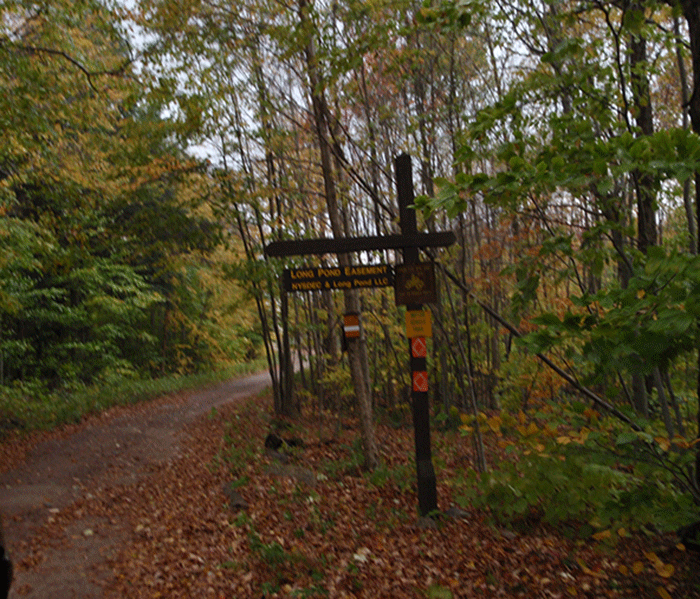
The Long Pond Conservation Easement is accessed from County Route 56. The access road passes through other commercial timberlands. The sign above marks the boundary of the Long Pond Conservation Easement.
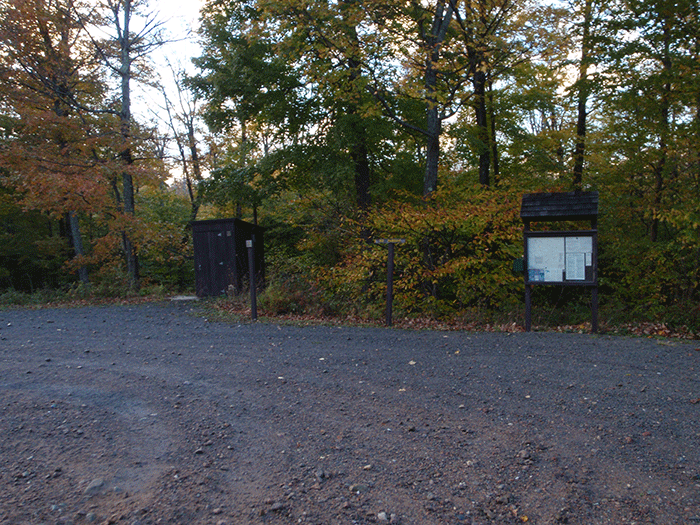
A public parking area on the Long Pond Conservation Easement. The public can use this area for starting hiking, mountain biking, or ATV riding.
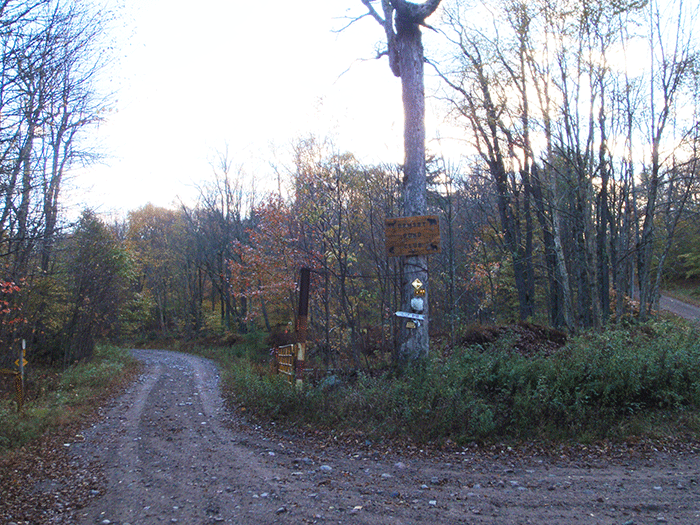
Signs at a road intersection on the Long Pond Conservation Easement. The public has blanket rights to hike or mountain bike throughout the tract. ATVs are allowed only on certain routes. There are camping opportunities.
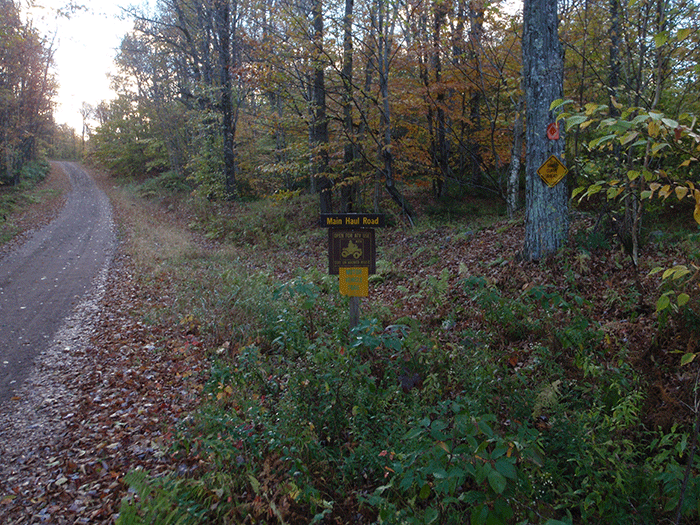
Another section of road in the Long Pond Conservation Easement, which is marked open for ATV riding.
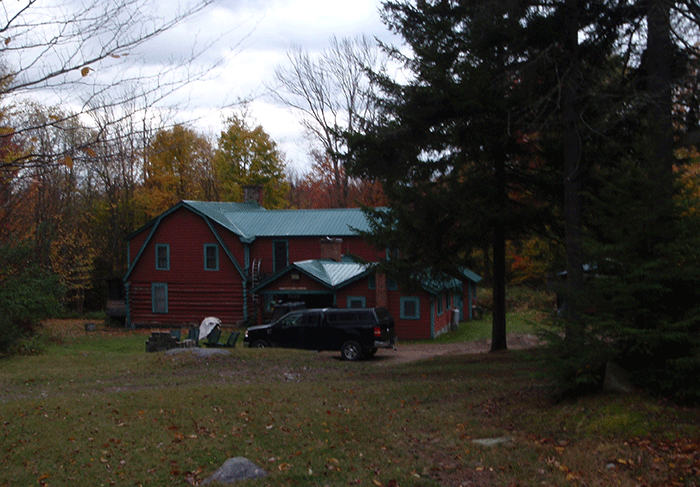
An example of one of the six permanent recreational camps on the Long Pond Conservation Easement lands.

